Related Research Articles
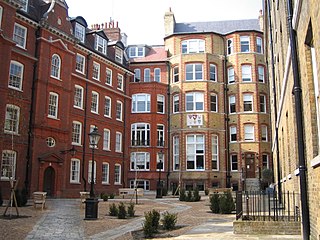
The Honourable Society of the Inner Temple, commonly known as the Inner Temple, is one of the four Inns of Court and is a professional association for barristers and judges. To be called to the Bar and practise as a barrister in England and Wales, a person must belong to one of these Inns. It is located in the wider Temple area, near the Royal Courts of Justice, and within the City of London. As a liberty, it functions largely as an independent local government authority.
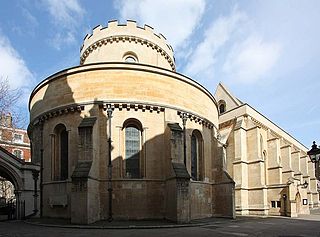
The Temple Church, a royal peculiar in the Church of England, is a church in the City of London located between Fleet Street and the River Thames, built by the Knights Templar for their English headquarters in the Temple precinct. It was consecrated on 10 February 1185 by Patriarch Heraclius of Jerusalem. During the reign of King John (1199–1216) it served as the royal treasury, supported by the role of the Knights Templar as proto-international bankers. It is now jointly owned by the Inner Temple and Middle Temple Inns of Court, bases of the English legal profession. It is famous for being a round church, a common design feature for Knights Templar churches, and for its 13th- and 14th-century stone effigies. It was heavily damaged by German bombing during World War II and has since been greatly restored and rebuilt.
Baron Archer, of Umberslade in the County of Warwick, was a title in the Peerage of Great Britain. It was created on 7 July 1747 for Thomas Archer, who had previously represented Warwick and Bramber in the House of Commons. He was succeeded by his son, the second Baron. He sat as Member of Parliament for Coventry. The title became extinct on his death in 1778. The first Baron was the son of Andrew Archer, the grandson of Thomas Archer, the great-grandson of Sir Simon Archer and the nephew of the architect Thomas Archer.

The Temple is an area of the City of London surrounding Temple Church. It is one of the main legal districts in London and a notable centre for English law, since the middle ages to the present day. It consists of the Inner Temple and the Middle Temple, which are two of the four Inns of Court and act as local authorities in place of the City of London Corporation as to almost all structures and functions. Before the establishment of these Inns of Court, the Temple area was the precinct given to the Knights Templar until they were suppressed in 1312, but the area has retained the name from that time. It became a centre of the legal profession soon thereafter.

Rothley Temple, or more correctly Rothley Preceptory, was a preceptory in the village of Rothley, Leicestershire, England, associated with both the Knights Templar and the Knights Hospitaller.

Sir Thomas Bromley was a 16th-century lawyer, judge and politician who established himself in the mid-Tudor period and rose to prominence during the reign of Elizabeth I. He was successively Solicitor General and Lord Chancellor of England. He presided over the trial of Mary, Queen of Scots and died three months after her execution.
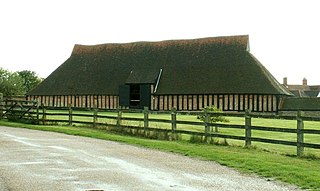
Cressing Temple is a medieval site situated between Witham and Braintree in Essex, close to the villages of Cressing and White Notley. It was amongst the very earliest and largest of the possessions of the Knights Templar in England, and is currently open to the public as a visitor attraction.
Bramber was a parliamentary borough in Sussex, one of the most notorious of all the rotten boroughs. It elected two Members of Parliament (MPs) to the House of Commons in 1295, and again from 1472 until 1832, when the constituency was abolished by the Great Reform Act.

The Root and Branch Petition was a petition presented to the Long Parliament on 11 December 1640. The petition had been signed by 15,000 Londoners and was presented to the English Parliament by a crowd of 1,500. The petition called on Parliament to abolish episcopacy from the 'roots' and in all its 'branches'.
Thomas Archer (1668–1743) was English architect and courtier.
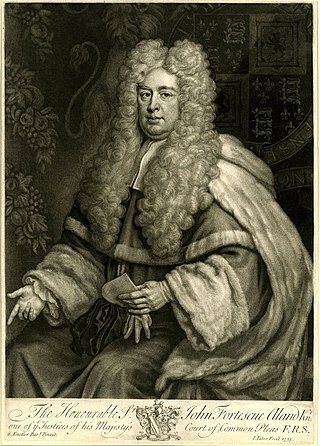
John Fortescue Aland, 1st Baron Fortescue of Credan was an English lawyer, judge, politician and peer who sat in the British House of Commons from 1715 to 1717. Aland wrote on English legal and constitutional history, and was said to have influenced Thomas Jefferson. A member of both the Middle Temple and Inner Temple, he became a King's Counsel in 1714 and was then appointed Solicitor General, first to the Prince of Wales and then to his father George I in 1715. After a short stint as a member of parliament, Aland was knighted and elevated to the Bench as a Baron of the Exchequer in 1717. He was subsequently a justice of the Court of King's Bench (1718–1727) and of the Court of Common Pleas (1728–1746), save for a brief hiatus between 1727 and 1728 which has been attributed to George II's displeasure with one of his legal opinions.

Clan Bissett is a Scottish clan. The clan is recognised by the Lord Lyon King of Arms but does not have a clan chief recognised by the Lord Lyon King of Arms, therefore the clan has no standing under Scots Law. Clan Bissett is considered an armigerous clan, meaning that it is considered to have had at one time a chief who possessed the chiefly arms; however, no one at present is in possession of such arms. The surname Bissett is also considered a sept of the Clan Fraser of Lovat.
Sir John Bramston, the younger, was an English lawyer and politician who sat in the House of Commons from 1660 to 1679. The son of Sir John Bramston, the elder and his first wife Bridget Moundeford, daughter of Thomas Moundeford, he was educated at Wadham College, Oxford, and called to bar at Middle Temple in 1635. In 1660 he was elected to the Convention Parliament for the county of Essex and again in the Cavalier Parliament of 1661. He frequently acted as chairman of committees of the whole House of Commons of England and was returned to parliament for Maldon in 1679 and 1685. He left an autobiography.
Sir William Herbert was a Welsh colonist in Ireland, author and Member of Parliament.
William Tany or Tani was Prior of the Order of Hospitallers in Ireland; he also served as Justiciar of Ireland 1373-1374, and as Lord Chancellor of Ireland from 1374 to 1377, and again from 1382 to 1384.
John L'Archers, Larger or L'Archer was an English-born cleric and judge who had a distinguished career in Ireland, holding the offices of Lord Chancellor of Ireland and Deputy Justiciar. He died during the first outbreak of the Black Death in Europe and was probably a victim of it.
John de Grauntsete or Grantsete (or John of Grantchester) (c. 1270 – c. 1350) was an English judge who lived in fourteenth-century Ireland. We know more about him than we do about any other contemporary Irish judge, and from the surviving information we can form some idea of the lifestyle of an Irish judge in his time. He sat in turn in each of the Irish Courts of common law, and uniquely he is known to have appeared in Court as an advocate even after he became a judge.
Sir William Sambach was an English-born lawyer and politician of the seventeenth century who spent much of his career in Ireland, but was driven back to England by the political turmoil of the 1640s, and died there.

John Fownes Luttrell was an English Tory politician from Dunster Castle in Somerset. Like many previous generations of Luttrells since the 16th century, he was a Member of Parliament (MP) for Minehead, his family's pocket borough near Dunster. He sat in the House of Commons of Great Britain and then in the House of Commons of the United Kingdom from 1774 until his death in 1816, except for a few months in 1806–07.
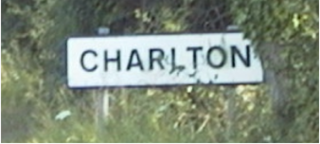
Charlton Manor is an English manor and ancient demesne over 1,000 years old in the county of Hertfordshire in England, approximately 45 minutes north of London, and adjacent to the market town of Hitchin with which it has ancient historical connections. Charlton Manor is recorded in the Hertfordshire County Archives.
References
- ↑ Lawrence-Archer J.H. Memorial of Families of the Surname of Archer London 1861
- ↑ Ball, F. Elrington The Judges in Ireland 1221–1921 John Murray London 1926
- ↑ Lawrence-Archer, J.H. Families of the Surname of Archer
- ↑ Burgtorf; Crawford; Nicholson: "The Debate on the Trail of the Templars (1307–1314)", Franham/Burlington 2010
- ↑ Ormond, Killick, Bradford: Early Commons Petitions in the English Parliament c.1290-c.1420 Cambridge University Press 2017 p.49
- ↑ Early Commons Petitions in the English Parliament
- ↑ Griffith-Jones and Park ed. The Temple Church in London- History, Architecture, Art Boydell Press 2010 p.15